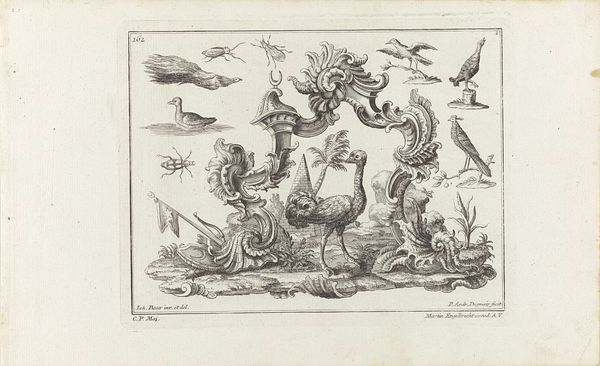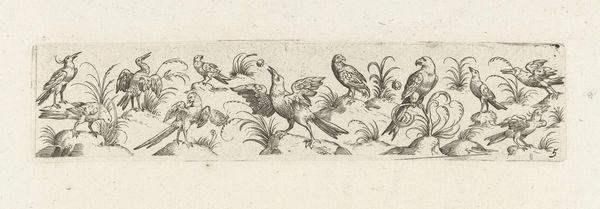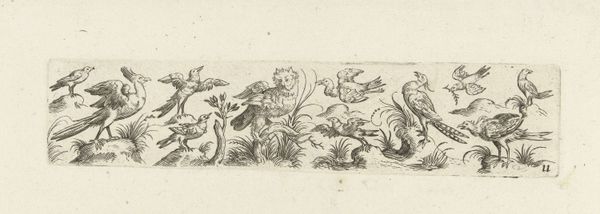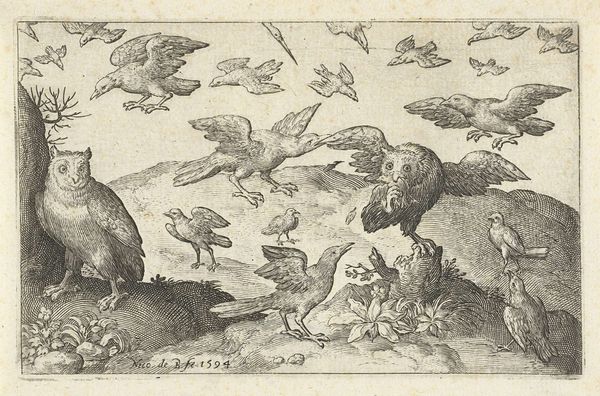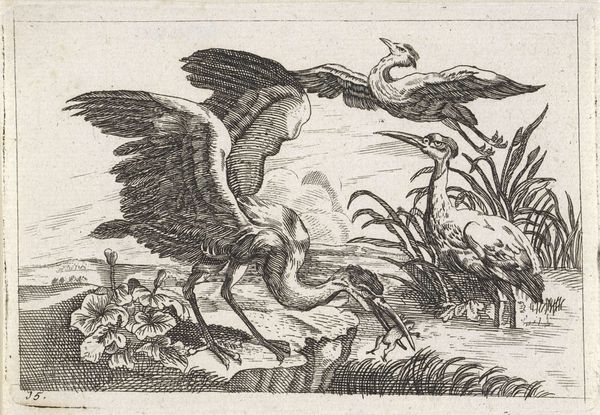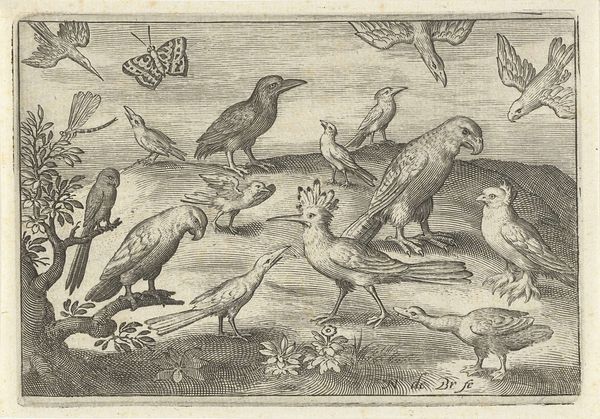
drawing, print, etching
#
drawing
#
baroque
# print
#
pen sketch
#
etching
#
landscape
#
bird
#
figuration
Dimensions: height 46 mm, width 194 mm
Copyright: Rijks Museum: Open Domain
Curator: This is "Fries met veertien vogels," or "Frieze with Fourteen Birds," an etching and engraving by Pieter Serwouters from around 1607, now housed at the Rijksmuseum. What’s your initial read on this piece? Editor: My first impression is…playful, but with a hint of the bizarre. The birds seem caught mid-action, and that elaborate Baroque frieze feels both decorative and somehow constraining, like a gilded cage of sorts. Curator: Precisely! Serwouters masterfully balances naturalistic observation with stylized ornamentation. Note the dynamism he achieves using just line, shadow, and perspective. Each bird exhibits a different posture and direction of gaze. It leads the eye across the entire frieze. Editor: I agree that the artist uses a very strong compositional arrangement, almost mathematical, to invite the eye. But this mathematical elegance, this near scientific depiction of birds in space also speaks to something else for me: the cultural obsession with classification and control during that period. Are we observing a celebration of nature, or a subtle assertion of dominance over it? Curator: An intriguing thought! The piece employs Mannerist sensibilities with that pronounced emphasis on elegance, refined detail and artifice over straightforward representation. Editor: Certainly. And perhaps that artifice can lead us to broader questions about the societal relationship to nature at that time, and what role, if any, visual representations play in defining those ideas. Where do we see humans in this piece, conceptually or literally? Curator: Humans remain off-stage here. It's this careful exclusion which gives such focus on nature itself as artifice. Serwouters compels a specific kind of attentive viewing – one aimed at deciphering how form dictates meaning. Editor: But also… whose nature is he showing, and who does that kind of focus ultimately serve? Curator: It's interesting to ponder the degree to which visual pleasure alone remains… Editor: Perhaps for another time. But thinking about the composition in relation to larger societal values opens valuable discussion. Thanks!
Comments
No comments
Be the first to comment and join the conversation on the ultimate creative platform.
